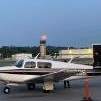How Do You Like These Jugs?
-
Members Online
- MikeOH
- rklems
- hammdo
- Thedude
- LetTheLeadOut
- Ibra
- Av8trinxs
- EricJ
- PilotX
- TangoTango
- TCC
- Joshua Blackh4t
- PT20J
- tcal780
- Cfidave
- Marc_B
- 00-Negative
- chrixxer
- AVDB
- M20R
- Ragsf15e
- DG Mech15
- Guillaume
- N201MKTurbo
- toto
- graham28105
- Springdale mx
- Paul Thomas
- CCAS
- 885EW
- redbaron1982
- flyingscot
- 1980Mooney
- MatthiasArnold
- GeeBee
- LANCECASPER


Recommended Posts